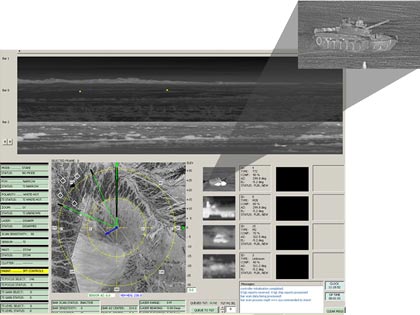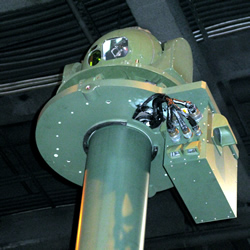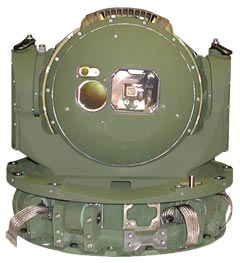AUSA, Washington DC, October 2009: The Mast Mounted System (MMS) developed jointly by Raytheon and Lockheed Martin is a networked sensor suite considered for inclusion as part of the U.S. Army’s modernized Brigade Combat Teams (BCT). MMS enables armored reconnaissance vehicles to acquire and share sensor images and videos across the platoon and up the chain of command. Information generated by the MMS supports both the host platform as well as the platoon’s ‘system of systems’, contributing to a wider ‘common operating picture’ shared across the unit’s elements. The MMS could become part of the proposed Stryker Recce Vehicle. The system is mounted on a five meter telescopic mast, and operated by the crew or remotely, through command and control services or dismounts soldiers.

The system can operate over simultaneous modes – Passive, wide area search scans objects of interest over a large area in seconds, displaying a panoramic view offering accurate target detection and location. 360° continuous by multi-spectral sensors provides target identification at ranges greater than enemy detection ranges, and provide accurate target location. The sensor elevates on a five meter telescopic mast, enabling operation from stealthy, stationary positions or on the move.

One of the system’s key advantages is the Central Electronic Unit signal processor (CEEU) performing, target tracking, recognition, and target location processing. The CEEU also performs single- and multi-target tracking, executing rate commands to keep the sensor automatically on target. The processor also performs aided target recognition (AiTR) to automatically and rapidly detect, recognize and prioritize targets of opportunity and military interest in the sensor’s field of view. Advanced algorithms such as Scene Assisted Non-Uniformity Correction (SANUC) are employed to improve image quality at long range. The multi-sensor system operates continuously day and night, in poor weather, and under impaired visibility conditions such as man-made lighting, dust, smoke screens and battlefield fires.
he EO payload employs multi-spectral and low-light level sensors mid-wave infrared and laser illuminated imager, providing wide, medium, narrow and ultra-narrow fields of view. Laser designation capability is used for directing precision fire. The system is controlled from a large flat panel display, presenting panoramic, multi-window displays of the MMS video and external sources, such as UAV imagery or Unattended Ground Sensors (UGS).




















